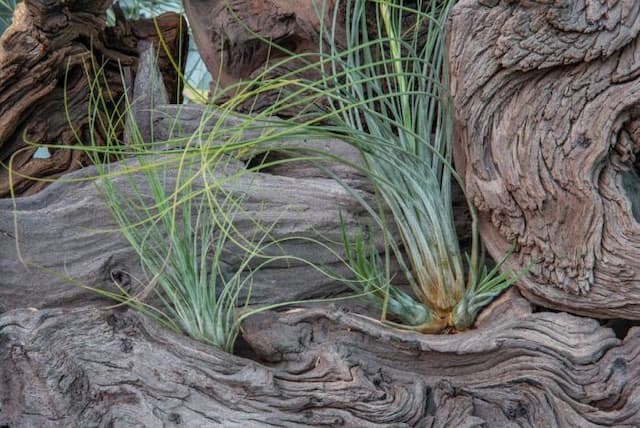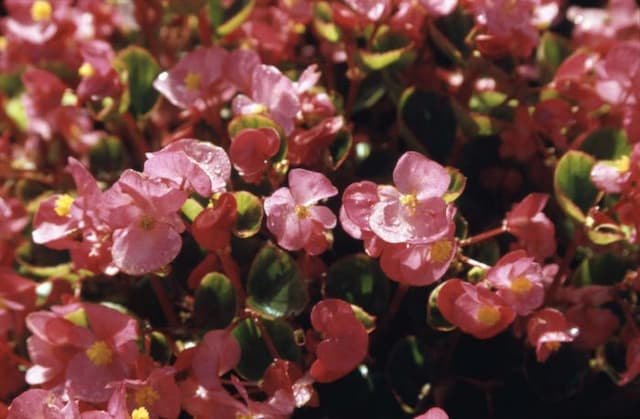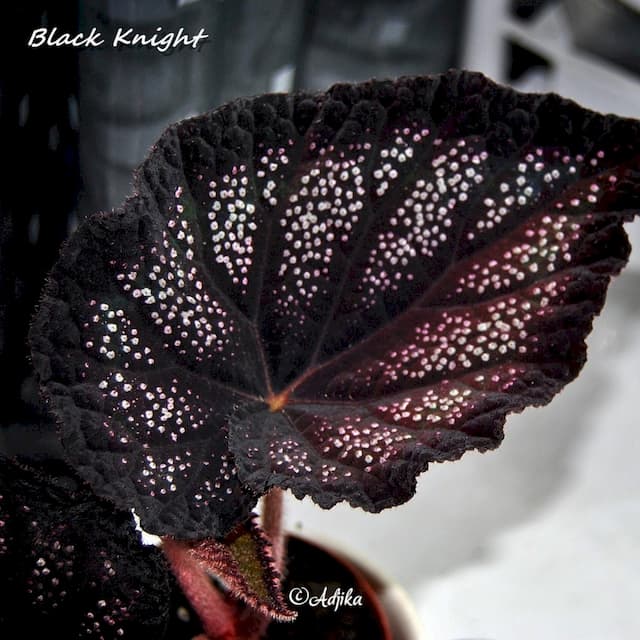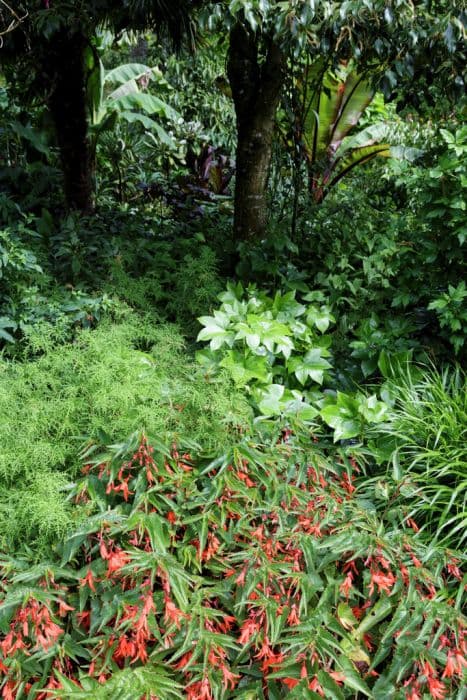Begonia Begonia Romance = 'Yamance' (PBR) (Million Kisses Series)
![begonia [Romance]](/_next/image?url=https%3A%2F%2Fplants-admin.emdemapps.com%2Fimages%2Fplants%2F%2Fimages%2F604b5ea4d74af.png&w=3840&q=75)
ABOUT
Begonia Romance, part of the Million Kisses Series, is a beautifully vibrant and eye-catching plant. It showcases a stunning cascade of delicate flowers, each with a unique heart-shaped appearance which no doubt influenced its romantic name. The flowers themselves radiate with hues that blend from vivid reds to softer pink tones, while the centers often have a hint of welcoming yellow, contributing to a visual sensation of warmth and passion. The foliage of this plant is just as attractive as the blooms. The leaves are thick and waxy with a lush green coloration, their shape being asymmetrical and slightly cupped, giving the plant a richly textured and dense foliage appearance. Begonia Romance is a commonly adored plant not only for its blooms but also for its continuous flowering habit, which can persist from spring until the first frost of fall, offering a long-lasting display of its charming features. Its posture is gracefully trailing, which makes it particularly well-suited for hanging baskets or as an elegant spill-over plant in mixed containers, adding to the aesthetic appeal of any garden space or patio area.
About this plant
 Names
NamesFamily
Begoniaceae
Synonyms
Romance Begonia, Million Kisses Romance
Common names
Begonia Romance 'Yamance' (PBR) (Million Kisses Series).
 Toxicity
ToxicityTo humans
Begonias, including the Begonia Million Kisses, contain insoluble oxalates which can be moderately irritating if ingested. If someone eats a part of the plant, they might experience symptoms like burning and irritation of the mouth, lips, tongue, and throat. Swelling, difficulty swallowing, and stomach pain are also possible. It is generally recommended to avoid ingesting this plant and to keep it out of reach of children who might accidentally consume it.
To pets
Begonias, such as the Begonia Million Kisses, are toxic to pets due to the presence of insoluble oxalates. If a pet ingests this plant, they may exhibit symptoms like oral irritation, drooling, vomiting, and difficulty swallowing. In extreme cases, it can cause swelling of the airways, posing a risk of asphyxiation. It is important to prevent pets from accessing these plants to avoid accidental ingestion.
 Characteristics
CharacteristicsLife cycle
Perennials
Foliage type
Deciduous
Color of leaves
Green
Flower color
Pink
Height
1 foot (30 cm)
Spread
1 foot (30 cm)
Plant type
Herb
Hardiness zones
10
Native area
South America
Benefits
 General Benefits
General Benefits- Easy to Care: Begonia Romance is low maintenance, requiring minimal trimming or pruning.
- Versatile: It can be used in hanging baskets, containers, or as bedding, enhancing garden design flexibility.
- Attractive Flowers: Produces abundant and vibrant flowers that can add a splash of color to any garden space.
- Long Blooming Period: Flowers continuously from spring until the first frosts, providing long-lasting visual appeal.
- Drought Tolerant: While it prefers moist soil, once established, it can tolerate periods of dryness.
- Non-Invasive: Has a controlled growth habit, reducing the risk of it overtaking other plants in the garden.
- Shade Tolerant: Can thrive in partial shade, making it suitable for a wide range of garden locations.
 Medical Properties
Medical PropertiesThis plant is not used for medical purposes.
 Air-purifying Qualities
Air-purifying QualitiesThis plant is not specifically known for air purifying qualities.
 Other Uses
Other Uses- Photography Prop: Begonias, with their vibrant colors and lush foliage, can be used by photographers as an attractive backdrop or as a subject to complement portrait and macro photography.
- Craft Projects: The petals and leaves of Begonias can be used in pressed flower crafts and as natural ornaments in homemade greeting cards, booklets, or wall art.
- Edible Decorations: Although not commonly eaten, Begonia petals are edible and can be used to adorn salads or desserts for a pop of color and a slight citrusy flavor.
- Feng Shui: In Feng Shui, Begonias can be used to encourage positive energy flow in the home when placed in appropriate areas according to the Bagua map.
- Teaching Tool: Begonias can be used in educational settings to teach children and adults alike about botany, plant life cycles, and the importance of taking care of living things.
- Color Dye: The flowers of some Begonias can be used to create a natural dye for fabrics, though it may require a large number of blossoms to produce significant color.
- Centerpieces: Begonias make stunning centerpieces for tables at events, adding a fresh and vibrant touch to the decor without being too fragrant or overpowering.
- Art Inspiration: Artists may use the distinctive form and color of Begonias as inspiration or incorporation into paintings, drawings, and other visual art forms.
- Therapeutic Horticulture: Caring for and observing the growth of Begonias can be part of therapeutic activities intended to improve mental well-being and reduce stress.
- Miniature Gardens: Due to their compact size, Begonias are excellent additions to fairy gardens and other miniature garden setups both indoors and outdoors.
Interesting Facts
 Feng Shui
Feng ShuiThe Begonia is not typically used in Feng Shui practice.
 Zodiac Sign Compitability
Zodiac Sign CompitabilityThe Begonia is not used in astrology practice.
 Plant Symbolism
Plant Symbolism- Caution: In the language of flowers, begonias can carry a message of caution. They might be given as a sign to take care and be wary.
- Unique Beauty: Begonias feature unusual forms and can thus symbolize individuality and a stand-out beauty that is not conventional.
- Harmony: With their symmetrical petal patterns and pleasant appearance, begonias can also symbolize harmony and balance in life.
- Gratitude: The presence of vibrant colors and enduring nature of begonias signifies deep appreciation and gratitude when given as a gift.
 Water
WaterBegonias, including the Million Kisses series, prefer consistent moisture without being waterlogged. Water the plant when the top inch of soil feels dry to the touch, which generally may be once a week, but can be more frequent in hot, dry conditions. Use lukewarm water and gently water at the base of the plant, avoiding the leaves to prevent disease. The amount of water needed depends on the size of the plant and the pot, but on average, use around 16 ounces of water every time you water, giving the plant time to absorb moisture without standing in water.
 Light
LightMillion Kisses Begonias thrive in bright, indirect sunlight. They should be placed in a spot where they can receive ample light without being hit by the harsh rays of the midday sun. A location near an east-facing or west-facing window with a sheer curtain would be ideal to protect them from too much direct sunlight while still providing the light they need.
 Temperature
TemperatureMillion Kisses Begonias prefer warm and stable temperatures between 60 and 75 degrees Fahrenheit. They should not be subjected to temperatures below 50 degrees Fahrenheit, as cold conditions can damage the plant. Keep them away from drafts and sudden temperature changes to maintain their health and growth.
 Pruning
PruningPruning Million Kisses Begonias is mostly done to remove dead or faded flowers and leaves, which encourages new growth and keeps the plant looking neat. Prune as needed throughout the growing season by snipping off the unwanted parts with clean, sharp scissors. The best time for more extensive pruning is in the spring to shape the plant and promote vigorous growth.
 Cleaning
CleaningAs needed
 Soil
SoilThe best soil mix for Begonia Romance (Million Kisses Series) should be light, well-draining, and rich in organic matter. A mixture incorporating peat moss, perlite, and compost is ideal. Maintain soil pH between 5.5 and 6.5 for optimal growth.
 Repotting
RepottingBegonia Romance (Million Kisses Series) should be repotted every 1-2 years or when it outgrows its container to refresh the soil and encourage healthy growth.
 Humidity & Misting
Humidity & MistingBegonia Romance (Million Kisses Series) thrives best at moderate to high humidity levels, around 50-70%, but can tolerate lower levels if necessary.
 Suitable locations
Suitable locationsIndoor
Place in bright, indirect light and maintain high humidity.
Outdoor
Protect from strong sun, keep in a warm, sheltered spot.
Hardiness zone
10-11 USDA
 Life cycle
Life cycleThe life cycle of Begonia 'Yamance' begins with seed germination, or more commonly, with the rooting of cuttings, as many cultivars are propagated vegetatively. After rooting, the plant enters a vigorous growth phase where it develops a bushy structure with numerous stems and leaves. As the plant matures, it starts to produce distinctive flowers that are a hallmark of the Million Kisses Series, typically blooming in spring or summer. Following pollination, should it occur, Begonia 'Yamance' may produce seed capsules, but cultivated plants are often sterile or propagated from cuttings to maintain desired traits. After flowering, the plant enters a period of senescence where older leaves may yellow and drop, and growth slows. Begonia 'Yamance' is often treated as an annual or biennial, but with proper care, including winter protection or overwintering indoors, it can survive and regrow for multiple years in some climates.
 Propogation
PropogationPropogation time
Spring-Early Summer
The Begonia Romance, part of the Million Kisses Series, is best propagated through stem cuttings, a popular method that can be performed in spring or early summer. To do this, a healthy stem is selected and cut just below a node, aiming for a length of about 3-4 inches (7.5-10 centimeters). It's important to use a sharp, clean cutting tool to prevent disease and ensure a clean cut. The leaves near the lower end of the cutting are removed, leaving only a couple at the top. This prepared cutting is then placed in a mixture of half peat and half perlite or a well-draining potting mix. The pot with the cutting should be kept in a warm, bright area but out of direct sunlight, and maintained with consistent moisture. Roots usually develop within a few weeks, and once the cutting is well-rooted, it can be transplanted to a regular pot.

![Begonia [Allure]](/_next/image?url=https%3A%2F%2Fplants-admin.emdemapps.com%2Fimages%2Fplants%2F%2Fimages%2F604b5b9006ab9.png&w=640&q=75)







